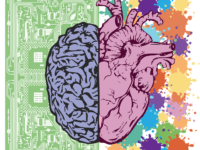Heartache is never good, but for individuals with Cardiac Valve Disease, having a broken heart can take on quite a literal meaning. A faulty heart can be the result of birth defects, infection, age, or other factors. There are many manifestations of this debilitating condition such as valvular stenosis, when the heart valve cannot fully open, or a condition commonly called leaky valve, when it cannot close tightly enough. Though severe, many types of valve malfunctions are treatable.
Bovine and porcine heart valves, which do not contain living tissue, can often replace human ones, but have to be replaced around every 15 years. It can take a very long time to get onto the transplant list, and the death of any patient waiting to get a valve is tragic. Mechanical valves are also used, but require a lifelong commitment to coagulant drugs, which help blood clot, but have negative side effects like infertility. Common treatments for these diseases can be invasive, expensive, and unsustainable for younger patients.
Fortunately, researchers at Harvard’s School of Engineering and Applied Sciences and the University of Zurich are contributing to research that aims to dramatically reduce the exclusivity and production time of heart valve replacements. Kevin Kit Parker, the leader of the Harvard team, and his group are using 3D printers to create an alternative solution for patients. Their product, called JetValve, is specifically targeted towards patients who would traditionally have to go under the knife every 10 years to replace a pig, cow, or horse heart valve.
In addition to its low durability, an animal heart valve replacement is expensive, non-degradable, and requires the patient to take immunosuppressive drugs. These drugs are not ideal, especially for children. The goal of JetValve technology is to allow the patient’s own cells to regenerate, an emerging concept in tissue engineering.
The goal of JetValve technology is to allow the patient’s own cells to regenerate, an emerging concept in tissue engineering.
It is important to note that this technology is not an artificial heart valve that serves the same function as a bovine or porcine heart valve replacement. Rather, it uses a combination of extracellular matrix (ECM) proteins and synthetic polymers to create a framework for new cells to overtake the JetValve. This product “mimics physiological conditions of the native valve” with a scaffold comprised of nanofibers made of blends of gelatin and other polymers called “biohybrids.” They are fabricated like cotton candy, each layer delicately accumulating until the entire structure is formed. The JetValve behaves like the structural beams and foundation that the rest of a house is built around.
The product was tested on sheep but their endogenous tissue cells were not able to penetrate deeply within the artificial valve. Instead, they just covered the surface. The valves were functional, but there was no indication that the cells actually assumed the intended function. “The big question,” says Michael Jaeggli, a Northeastern professor with years of industry experience in heart tissue engineering, “is what happens to an animal when you let the product sit in it for a long time. What is the body going to do with it?” Though this technology is promising Dr. Jaeggli believes, “they have a lot of work to do in getting the cells to actually penetrate the scaffold.” The appeal of JetValve is that it can easily scale to fit a patient and never has to be maintained with risky surgeries. The insertion of these structures is also minimally invasive, only requiring an implantation catheter.
The results of this innovative study are a stepping stone to completely regenerative heart valve treatment.
The results of this innovative study are a stepping stone to completely regenerative heart valve treatment. The next phase in the development of this technology is animal testing and further clinical research. For some who literally have a broken heart, the technology being explored like that at Harvard has the capacity to change the course of their lives. This technology has a long way to go before it reaches the shelves but until then it serves as a promising solution.
doi: 10.1016/j.biomaterials.2017.04.03
Image source: Pixabay






